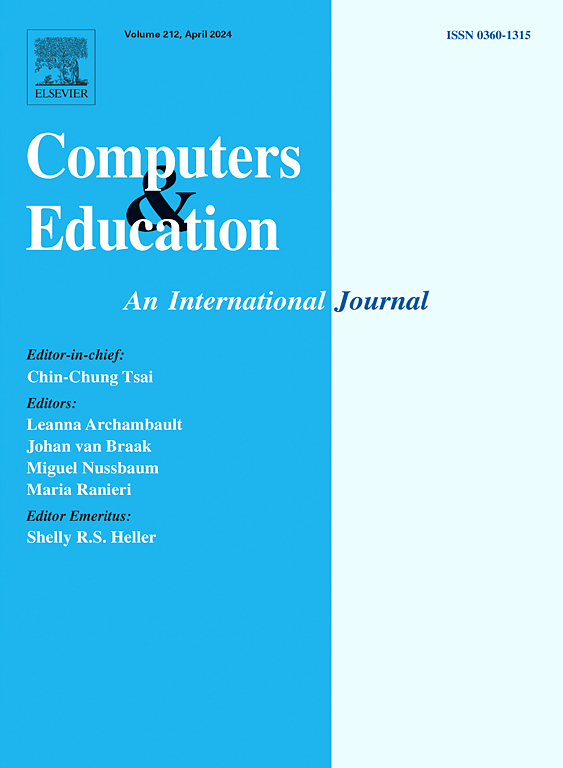在STEM教育中主动学习的人-基因交互:最新的和未来的方向
IF 10.5
1区 教育学
Q1 COMPUTER SCIENCE, INTERDISCIPLINARY APPLICATIONS
引用次数: 0
摘要
这篇系统的最新综述综合了50项研究的结果,这些研究考察了从高中到研究生阶段STEM教育中GenAI与主动学习模式(如基于问题的学习、协作学习和基于探究的学习)的整合。该分析确定了人类与人工智能互动的五大主要类别:辅导、共同创造、处理、指导和模拟,主要用于支持个人学习者发展解决问题、批判性思维和计算思维技能。虽然研究结果强调了GenAI支持建构主义主动学习的潜力,但它的应用范围仍然很大。此外,与算法偏差、信息可靠性、隐私和有限的领域特异性相关的挑战限制了人类与基因人工智能协同交互的编排,在与基因人工智能驱动的应用程序交互时,对教育者和学习者都提出了重大的教学要求。未来的研究应该探索如何协调人类与基因的互动,以支持更积极、协作和上下文敏感的学习环境。这包括支持学生发展必要的能力,以反思、有目的和有意义的方式参与GenAI工具,以增强主动学习。本文章由计算机程序翻译,如有差异,请以英文原文为准。
Human-GenAI interaction for active learning in STEM education: State-of-the-art and future directions
This systematic state-of-the-art review synthesizes findings from 50 studies examining the integration of GenAI into active learning models (such as problem-based learning, collaborative learning, and inquiry-based learning) within STEM education from high school to graduate levels. The analysis identifies five overarching categories of human–GenAI interaction: Tutoring, Co-creating, Processing, Coaching, and Simulating, primarily leveraged to support individual learners in developing problem-solving, critical thinking, and computational thinking skills. While the findings highlight GenAI's potential to support constructivist active learning, its application remains largely individual in scope. Moreover, challenges related to algorithmic bias, information reliability, privacy, and limited domain specificity constrain the orchestration of synergistic human-GenAI interaction, placing significant pedagogical demands on both educators and learners when interacting with GenAI-powered applications. Future research should explore how human-GenAI interactions can be orchestrated to support more active, collaborative, and context-sensitive learning environments. This includes supporting students in developing the competencies necessary to engage, individually and collaboratively, with GenAI tools reflectively, purposefully, and meaningfully in ways that enhance active learning.
求助全文
通过发布文献求助,成功后即可免费获取论文全文。
去求助
来源期刊

Computers & Education
工程技术-计算机:跨学科应用
CiteScore
27.10
自引率
5.80%
发文量
204
审稿时长
42 days
期刊介绍:
Computers & Education seeks to advance understanding of how digital technology can improve education by publishing high-quality research that expands both theory and practice. The journal welcomes research papers exploring the pedagogical applications of digital technology, with a focus broad enough to appeal to the wider education community.
 求助内容:
求助内容: 应助结果提醒方式:
应助结果提醒方式:


